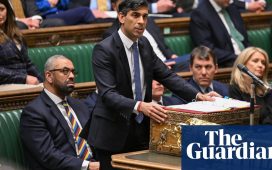The Government is now able to test 10,000 people a day to see if they are infected with the coronavirus.
Health Secretary Matt Hancock took to Twitter to confirm the news.
He tweeted: “Good news that we’ve reached 10,000 #coronavirus tests a day – ahead of schedule. We’re on track to 25,000. #StayHomeSaveLives ”
Cabinet Office Minster Michael Gove also praised the announcement.
It comes amid fierce criticism about slow progress gearing up the response.
But Mr Gove declined to give a timescale for when all frontline NHS staff will get access to checks – after small-scale trials were launched.
And there is still no clear idea when the UK will be conducting the 25,000 tests a day promised by Boris Johnson.

(Image: via REUTERS)
The UK’s coronavirus death toll rocketed by 260 to 1,019 yesterday, the biggest increase so far in the fight against the virus.
The move to increase testing comes after the government was slammed for ending efforts to to test everyone with symptoms on March 12.
In South Korea and China, where the virus appears to be more successfully contained, everyone who is suspected of having the virus is tested.
The criticism forced Boris Johnson to declare thwe government would rapidly expand on the number of tests from under 5,000 a day to 25,000.
Speaking on Sky News’ Sophy Ridge programme, Mr Gove said he could confirm the number of tests per day had now hit 10,000.

(Image: PA)
“We’re going to move to get that up to 25,000 a day and we’re doing all that we can to increase and to accelerate that, and I hope that we will be able to test as many frontline workers at the earliest possible stage,” he said.
“We’ve been working, as I say, with scientists, with the big players in providing medical supplies and drugs, like Boots, and others, in order to increase the number of tests that we have.”
Mr Gove also confirmed that the length of the coronavirus lockdown depends on how stringently the public stick to the rules, as he declined to give a timeframe for the strict measures being lifted.
The Chancellor of the Duchy of Lancaster warned on Sunday that ministers would not hesitate to enforce tougher rules, but said the evidence is people are obeying them.
After the death toll in the UK passed 1,000, Mr Gove declined to be drawn on how long the tough measures restricting people’s lives would be in place for, and what stricter rules could look like
“There are different projections as to how long the lockdown might last,” he told Sky’s Sophy Ridge on Sunday, when asked about one key expert’s prediction of June.
“But it’s not the case that the length of the lockdown is something that is absolutely fixed.
“It depends on all of our behaviour. If we follow the guidelines, we can deal more effectively with the spread of the disease.”

(Image: Getty Images)
He insisted “it is important” that “we don’t pre-empt discussion of what other steps may be required” when pressed on what further measures could be introduced.
Former Prime Minister Tony Blair aid Britain must step up its testing regime and test “virtually everyone” to contain the coronavirus.
The ex-Labour leader said he was sure that the Government was working flat out to contain the virus but that mass testing was needed in the fightback.
Mr Blair said that a point will be reached where a “very large” proportion of the entire population is tested for coronavirus.
He said: “Your risk, obviously, is as you start to ease the lockdown, how do you then deal with any resurgence of the disease? This, of course, is what they’re now dealing with in China and South Korea, and elsewhere.
“Unless you have that testing capability that you can apply at scale, and by the way when I say mass testing I mean I actually think you will need to get to the point where you’ve got the capability, and I assume we’re preparing for this now, of testing literally a very large proportion of the entire population.
“You may have to do those tests two or three different times because you need all the time to be able to track what’s happening with the disease, to learn where, for example, there may be a surge or a hotspot of it, and take immediate action.”













